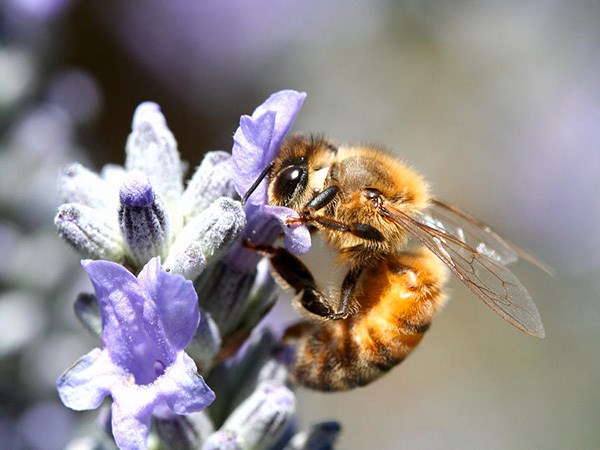It’s of worldwide concern that the populations of all bees, in particular honeybees (Apis mellifera), are under multiple threats. The loss of natural habitat, stress, lack of nutrition, use of neonicotinoid insecticides, a parasitic mite (Varroa destructor) and many bacterial and viral diseases seem to be the prime causes of decline in all bee species.
Approximately 33% of the food we eat today would not be in stores without these hard-working insects. They pollinate 90% of all apples, blueberries and vegetables like broccoli and onions; 80% of cucumbers, celery and cherries; and 100% of all almonds.
Bees are very resourceful and able to adapt to even urbanized areas. As a gardening community, we should make a thoughtful commitment to create bee-friendly habitats that will attract not only honeybees but also mason bees and bumblebees. There are over 4000 species of native bees in North America. Honeybees are recent introductions brought by early settlers from Europe in the 1700s. The majority of wild honeybees make their nests in the ground, so it is important not to drench your soil with harmful pesticides. They can also nest in cavities found in trees, fences and older buildings.
Our gardens should include bee-friendly plants that will, over a long continuous period of time, provide both pollen and nectar. On the West Coast, this timeframe could be from January through December. Although native plants may be preferred, bees are attracted to many different types of plants, from annuals and perennials to trees and shrubs. It seems that honeybees prefer flowers with more nectar, while mason bees tend to prefer flowers with more pollen. This is why diversity is key.
There are many flowers that provide both pollen and nectar during the main growing season but it
can be more difficult to find earlier and later flowering sources. Ideal early-flowering plants for zone 5 and higher are the large family of helleborus, winter-flowering heathers, Armeria maritimas, Geranium macrorrhizum, columbines, prostrate Sedum spathulifoliums and mahonias.
For main season plants that attract bees with both nectar and pollen, I’m very impressed with the many new agastaches. I can’t get over the numbers of bees attracted to these plants. Centaurea ‘Caramia’, another superstar bee attractor, has frilly mauve flowers loaded with pollen all summer long. Scabiosas, lupines, foxgloves, coreopsis and lavender plants are all bee favourites.
Echinacea purpurea and Solidago canadensis are North American natives that bees love, and they carry on blooming well into fall. One of the single most popular bee-friendly plants is sea holly or Eryngium planum - they are almost never without bees. Sedum ‘Autumn Joy’, Michaelmas daisy, Aster novi-belgii’ and rudbeckias push pollen and nectar until late October. Heliopsis ‘Table Mountain’ is the very latest blooming perennial I know, often blooming through November.
These plants, as well as many others, are great garden plants and very bee-friendly. Observation is key. When you see any flower that is attracting a wide range of bees, make note and add it to your collection.
There are also custom flower seed mixes designed for attracting bees over a longer period of time. All you do is rake in the seed when we get day time soil temperatures of 10°C, keep them moist and watch these dual purpose mixes make a beautiful addition to your garden while providing both pollen and nectar. Make sure the seeds are not treated with fungicides that can be potentially harmful to bees.
I’m convinced the gardening community can make a significant contribution to the welfare of all bees by creating much needed new habitats. Whenever you see the flowers on your trees, perennials and annuals smothered in bees, it will be a heart-warming sight to know you are helping out one of nature’s most critical allies.



